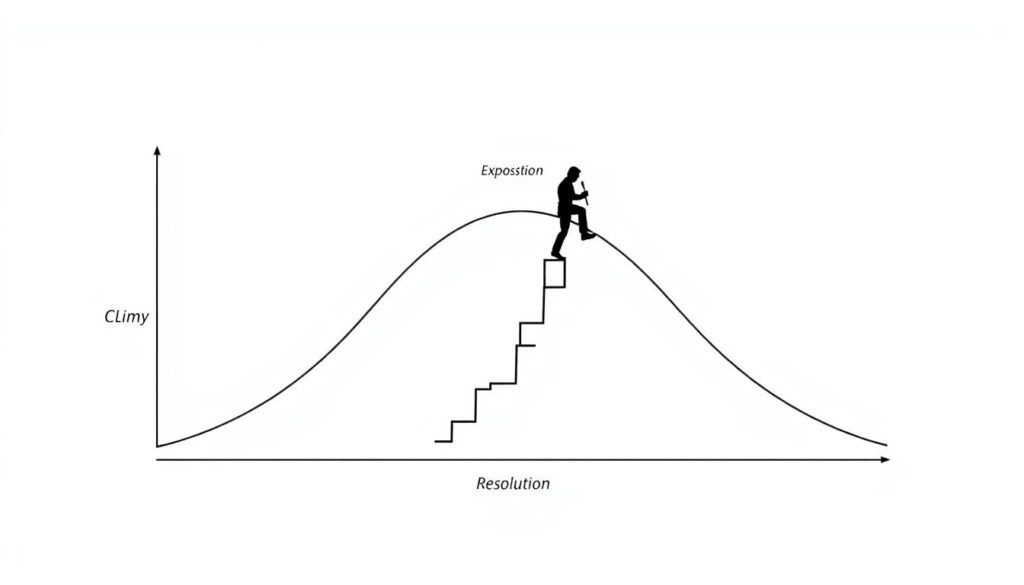Physical Address
304 North Cardinal St.
Dorchester Center, MA 02124
Physical Address
304 North Cardinal St.
Dorchester Center, MA 02124

We all have stories worth telling. Those moments that changed us, challenged us, or revealed something essential about who we are. A personal narrative captures these pivotal experiences, transforming them into compelling stories that connect with others on a profound level. Whether you’re a student working on an assignment, a professional crafting your brand story, or a writer seeking to share your experiences, mastering the art of personal narrative opens doors to deeper connections and powerful communication.
In this comprehensive guide, we’ll explore what makes personal narratives so impactful, walk through the step-by-step process of crafting your own, and examine real-world examples that demonstrate their effectiveness. By the end, you’ll have the tools and confidence to transform your experiences into stories that resonate, inspire, and leave a lasting impression.
A personal narrative is a first-person account of a significant experience from your life. Unlike a simple retelling of events, a personal narrative delves into how these experiences affected you, what you learned from them, and how they contributed to your personal growth or changed your perspective.
At its core, a personal narrative is transformational. It focuses on moments that challenged your beliefs, forced you to overcome obstacles, or revealed important truths about yourself or the world around you. These aren’t just any memories—they’re the ones that shaped who you are today.
What distinguishes a powerful personal narrative from a simple anecdote is its depth of reflection and emotional resonance. It’s not just about what happened, but about the meaning you derived from these experiences and how they connect to universal human themes that others can relate to.
First-person perspective: Written using “I” to share your direct experiences and thoughts.
Significant experience: Focuses on a meaningful event or series of related events that had a notable impact on your life.
Emotional journey: Explores your feelings, reactions, and internal processing of the experience.
Reflection: Includes thoughtful analysis of what the experience taught you or how it changed you.
Sensory details: Uses vivid descriptions that engage the reader’s senses to bring the story to life.
Universal connection: Relates your personal experience to broader human themes that readers can identify with.

Personal narratives are far more than just stories—they’re powerful tools that serve multiple purposes in our personal and professional lives. Understanding their importance can help you approach your own narrative with intention and purpose.
Writing your personal narrative requires deep reflection on significant life experiences. This process often leads to new insights about yourself and your journey. Many people discover that articulating their experiences helps them process difficult emotions and find meaning in challenging situations.
Research has shown that expressive writing about traumatic or significant experiences can have therapeutic benefits, reducing stress and improving mental well-being. When you shape your experiences into a coherent narrative, you often gain a sense of control and understanding that can be profoundly healing.
Personal narratives bridge the gap between individual experiences and universal human emotions. When you share your authentic story, you create opportunities for others to see themselves in your journey, fostering empathy and deeper connections.
In a world increasingly divided by polarized viewpoints, personal narratives offer a way to transcend differences by appealing to our shared humanity. They help us understand perspectives different from our own, expanding our capacity for compassion and connection.
In professional contexts, your personal narrative can differentiate you from others with similar qualifications. Whether in job interviews, networking events, or professional bios, a compelling personal narrative helps others understand not just what you do, but why you do it and what unique perspective you bring.
Many successful professionals and entrepreneurs have leveraged their personal narratives to build authentic brands that resonate with their target audiences. Your story can become a powerful asset in establishing your professional identity and connecting with clients, colleagues, and opportunities.
“The stories we tell literally make the world. If you want to change the world, you need to change your story.”

The foundation of a compelling personal narrative is selecting an experience that truly matters—to you and potentially to others. This doesn’t necessarily mean choosing the most dramatic event in your life. Sometimes quieter moments of realization or gradual transformations make for the most powerful narratives.
Questions to help identify meaningful topics:
Once you’ve identified potential topics, select the one that evokes the strongest emotional response and offers the clearest transformation or insight. The best personal narratives often center on moments of conflict, change, or realization.
Every compelling narrative follows a structure that guides readers through your experience in a way that builds engagement and emotional investment. For personal narratives, the classic narrative arc works exceptionally well:

Exposition: Introduce yourself and set the scene. Provide just enough context for readers to understand the significance of what follows.
Rising Action: Detail the events that led to the central conflict or challenge. Show how tension or stakes increased over time.
Climax: Present the turning point—the moment of greatest tension, decision, or realization that changed everything.
Falling Action: Explain the immediate aftermath of the climax and how you began to process or understand what happened.
Resolution: Share the lessons learned, how you changed, or what you understand now that you didn’t before.
Reflection: Connect your personal experience to broader themes or takeaways that others might apply to their own lives.
Create a simple outline with these elements before you begin writing. This structure will help ensure your narrative flows logically and builds toward meaningful insights rather than simply recounting events.
The difference between a forgettable account and an immersive narrative often comes down to sensory details. These details help readers experience your story rather than simply understand it intellectually.
Instead of: “I was nervous before my presentation.”
Try: “My hands trembled as I shuffled my note cards, the paper sticking to my damp palms. The fluorescent lights buzzed overhead, seeming to grow louder as the clock ticked closer to my turn.”
Instead of: “The hospital was depressing.”
Try: “The antiseptic smell burned my nostrils as I walked down the corridor, past walls painted an institutional green that had faded to the color of old mint gum. The squeak of my sneakers against the linoleum echoed in the quiet, interrupted only by the distant beeping of monitors.”
As you write, engage all five senses where appropriate. What did you see, hear, smell, taste, and feel? These details create a vivid mental picture that pulls readers into your experience and helps them connect emotionally with your story.
Conversations often mark pivotal moments in our experiences. Including dialogue in your personal narrative adds immediacy and helps characterize the people in your story, including yourself.

While you likely won’t remember exact words from past conversations, aim to capture the essence of what was said in a way that feels authentic. Focus on exchanges that reveal character, advance the story, or highlight the significance of the moment.
Tips for Writing Effective Dialogue:
What separates a personal narrative from a simple anecdote is the element of reflection. As you write, weave in your thoughts about what events meant to you, how they changed you, and what you learned.
This reflection can happen in two ways:
Both types of reflection add depth to your narrative and help readers understand the significance of your experience. Be honest about your emotions and insights, even if they reveal vulnerability or mistakes—this authenticity is what makes personal narratives powerful.
Your opening paragraph needs to hook readers immediately, giving them a reason to invest in your story. Consider starting with:
Your conclusion should do more than simply wrap up events—it should provide closure while emphasizing the meaning or lessons derived from your experience. The strongest endings often circle back to themes introduced at the beginning, showing how you or your understanding has transformed.
Once you’ve completed your first draft, set it aside for at least a day before returning with fresh eyes. During revision, focus on:
Structure: Does your narrative flow logically? Are there any gaps or confusing transitions?
Language: Have you used specific, vivid details? Are there places where stronger word choices would enhance the narrative?
Purpose: Does your narrative clearly convey the significance of your experience and what you learned from it?
Consider asking a trusted friend or mentor to read your narrative and provide feedback. Sometimes others can identify unclear sections or missed opportunities that you might overlook.
Examining successful personal narratives can provide valuable insights into effective techniques and approaches. Here are two examples that demonstrate different aspects of powerful personal storytelling:

In this narrative, Maynes uses a guided meditation as a framing device to explore her recovery from a car accident. As the meditation prompts her to scan different parts of her body, each section triggers memories related to her injury and healing process.
“The top of my head…that’s what struck the side of the car when we were hit. I wasn’t wearing my seatbelt when it happened. We had only just piled into our seats when the truck smashed into the side of the car–my side of the car. It happened in an instant, but I was thrown in slow motion. I’ve never screamed like that before.”
Why it works: This narrative effectively uses a unique structure (the body scan meditation) to organize a complex emotional journey. The physical movement through the body parallels the emotional and psychological healing process. Maynes balances vivid sensory details of the accident with thoughtful reflection on how the experience changed her perspective on life.

This narrative follows the ABCDE storytelling framework:
Why it works: This narrative follows a clear structure that guides readers through the experience. It establishes a relatable problem (stress), shows action taken to address it (the hike), introduces conflict (getting lost), and concludes with resolution and reflection. The straightforward approach makes it accessible while still conveying meaningful personal growth.

One of the most challenging aspects of personal narrative writing is finding the right balance between various elements:
Honesty vs. Oversharing
Be authentic without including details that might make you or others uncomfortable if shared publicly.
Detail vs. Overwriting
Include vivid specifics that enhance your story without bogging it down with unnecessary description.
Emotion vs. Melodrama
Express genuine feelings without exaggerating for dramatic effect, which can undermine credibility.
Remember that effective personal narratives aren’t about impressing readers with dramatic events or perfect writing—they’re about connecting authentically through shared human experiences. Focus on honesty, specificity, and meaningful reflection rather than trying to create an idealized version of your story.

Personal narratives serve valuable purposes across many contexts. Understanding these applications can help you tailor your approach to different situations:
In academic environments, personal narratives help develop critical thinking and communication skills. Students learn to organize thoughts, reflect on experiences, and connect personal insights to broader concepts. College application essays often take the form of personal narratives, allowing admissions committees to understand applicants beyond their grades and test scores.
In the workplace, personal narratives can differentiate you from competitors with similar qualifications. Job interviews often include questions that invite personal narratives (“Tell me about a time when…”), and crafting compelling responses can significantly impact hiring decisions. Additionally, professionals increasingly use personal narratives in bios, LinkedIn profiles, and presentations to establish authentic connections with colleagues and clients.
Many therapeutic approaches recognize the healing power of shaping difficult experiences into coherent narratives. Writing about challenging events can help process emotions, identify patterns, and develop new perspectives. Some therapists specifically assign narrative writing as part of treatment for trauma, depression, or anxiety.
In our connected world, personal narratives have found new platforms through blogs, social media, podcasts, and video content. These digital formats allow for creative approaches to storytelling, incorporating multiple media elements while reaching global audiences. Many successful content creators have built engaged communities around authentic personal narratives that resonate with specific audiences.

Crafting a personal narrative is both an art and a skill—one that improves with practice and reflection. By following the steps outlined in this guide and studying effective examples, you can transform your significant experiences into compelling stories that resonate with others.
Remember that your unique perspective and experiences have value. The challenges you’ve faced, the insights you’ve gained, and the growth you’ve experienced can inspire, comfort, or motivate others facing similar circumstances. In sharing your authentic story, you contribute to our collective understanding of what it means to be human.
Whether you’re writing for academic purposes, professional development, personal healing, or creative expression, the process of crafting your narrative offers benefits that extend beyond the finished product. The reflection required to shape your experiences into a meaningful story often leads to new insights and deeper self-understanding.
Your story matters. Start writing it today.
The ideal length depends on your purpose and context. Academic personal narratives typically range from 500-3,000 words, while professional stories might be as brief as 200-500 words. Focus on including enough detail to engage readers and convey your message clearly without unnecessary information. Quality matters more than quantity—a concise, powerful narrative often has more impact than a longer, less focused one.
Yes, difficult experiences often make for powerful narratives because they involve transformation and growth. However, consider your audience, purpose, and your own comfort level. Write about challenging experiences only if you feel emotionally ready to explore them. Also, be mindful of how sharing certain details might affect others involved in your story.
The most memorable personal narratives stand out through authenticity rather than gimmicks. Focus on specific, unique details of your experience rather than general statements. Develop your distinct voice and perspective. Most importantly, dig deep into what your experience meant to you—the insights that are uniquely yours will naturally differentiate your narrative from others.
Absolutely! Creative elements like metaphors, similes, and symbolism can enhance your personal narrative by helping readers connect emotionally with your experience. These devices can also help communicate complex feelings or insights that might be difficult to express directly. Just ensure these creative elements serve your story rather than distract from it.
Download our free Personal Narrative Worksheet to help structure your story and bring your experiences to life. This practical template walks you through each step of the process, from selecting your topic to crafting a compelling conclusion.